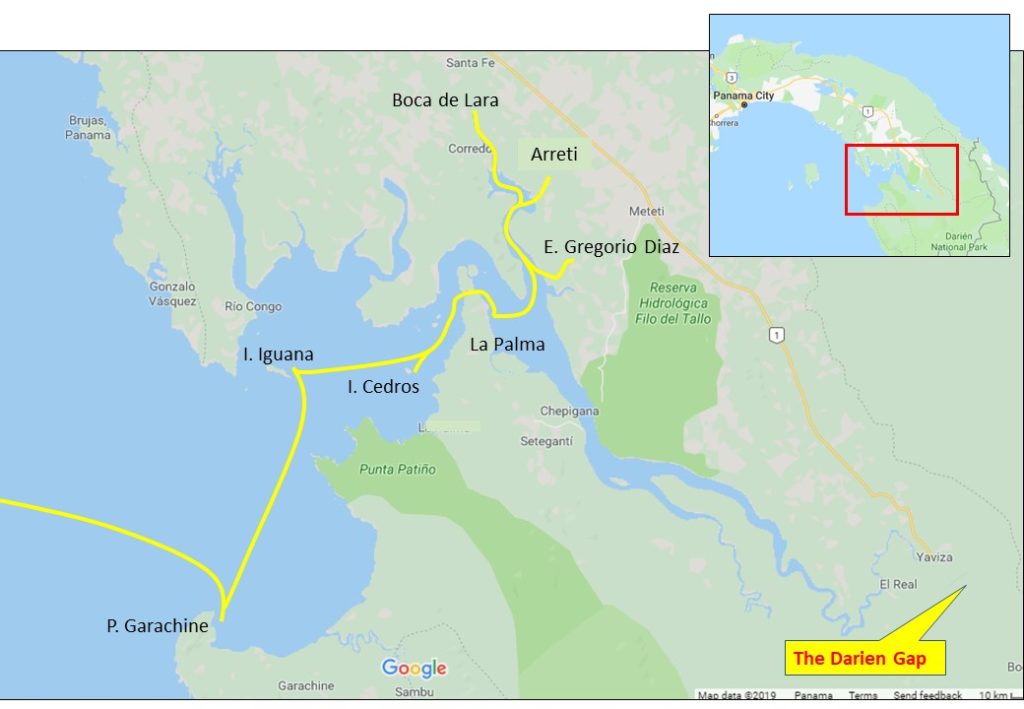
I’ve always been fascinated by the Darien area of Panama since I heard about the Darien Gap, a 106 km break in the Pan-American Highway which stretches from Prudhoe Bay, Alaska in the north to Tierra del Fuego in Argentina in the south. The highway crosses the Andes and the Rocky Mountains, the arid deserts of Peru and the tundra in Alaska – what sort of place has terrain so challenging that they couldn’t push the road through?
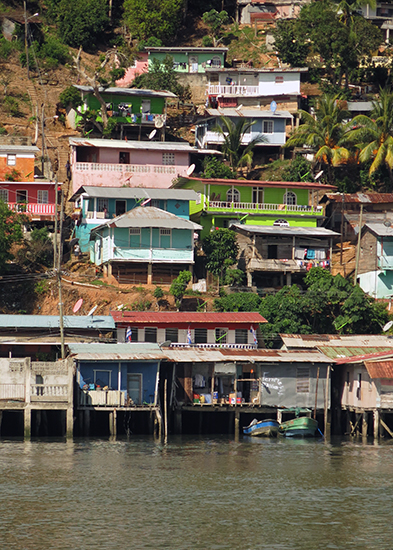
It turns out that vertigenous mountains, impenetrable rainforest and huge tracts of swampland, runaway slaves, hostile natives and nasty tropical diseases were part of the problem and more recently the impact on the environment and the culture of the indigenous people have kept the road builders at bay. Numerous expeditions have sought to bridge the Gap on foot, bicycle, motorbike and eventually 4WD but guerilla activity, drugs and gun running have made land travel in Darien highly dangerous. Since 2013 military activity on both sides of the border has neutered the guerillas and clamped down on the traffikers and the tendrils of tourism have begun to penetrate the area.
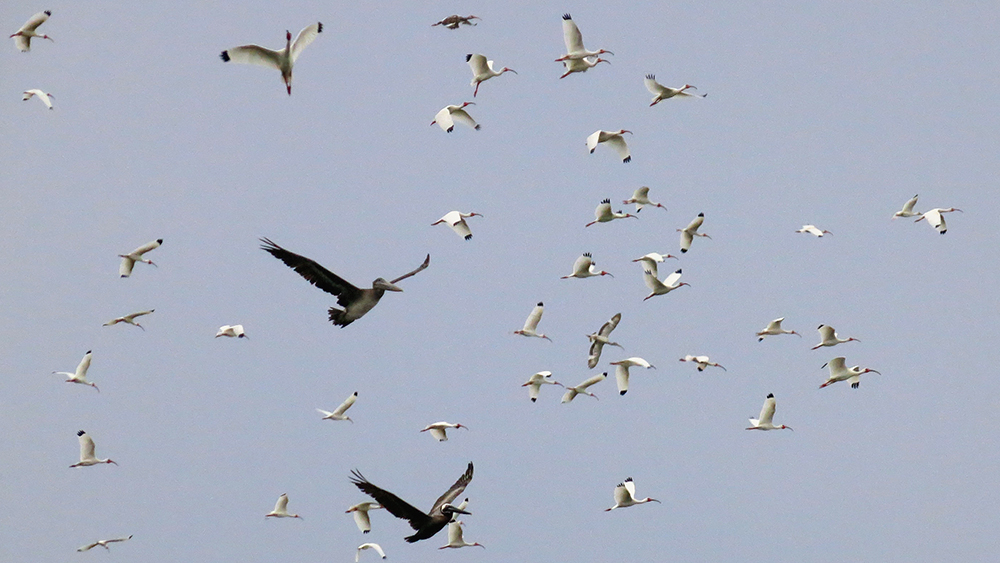
Wilderness areas always attract me; with the opportunity to experience nature unspoilt by progress and the chance to see birds and animals usually hidden by the busy-ness of civilization. The handful of boats we had met who had been to Darien reported no problems, their worst tales were of mosquitos and submerged logs. We checked with the AeroNaval to find out if the area was safe to visit and if there were any places to be avoided. It got a clean bill of health so we decided to go and see it for ourselves.
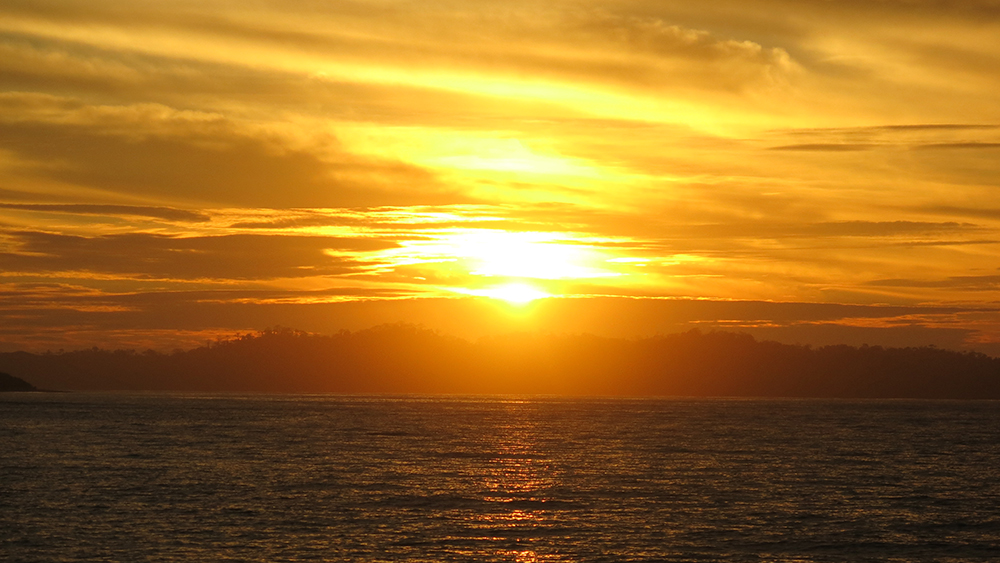
Many of the large rivers that drain Darien flow into the Golfo San Miguel which lies on the east side of the Panama Gulf (see map below). It is only 35NM from the Islas del Rey and we had a beautiful sail across. We slalomed through a fleet of trawlers fishing at the mouth the bay and anchored at Punta Garachine on the south side. In Golfo San Miguel and in the Darien rivers we needed to plan our movements with the tides. The next day we rode the flood tide up to Isla Iguana where we enjoyed a most beautiful sunset and the following day the we reached La Palma.
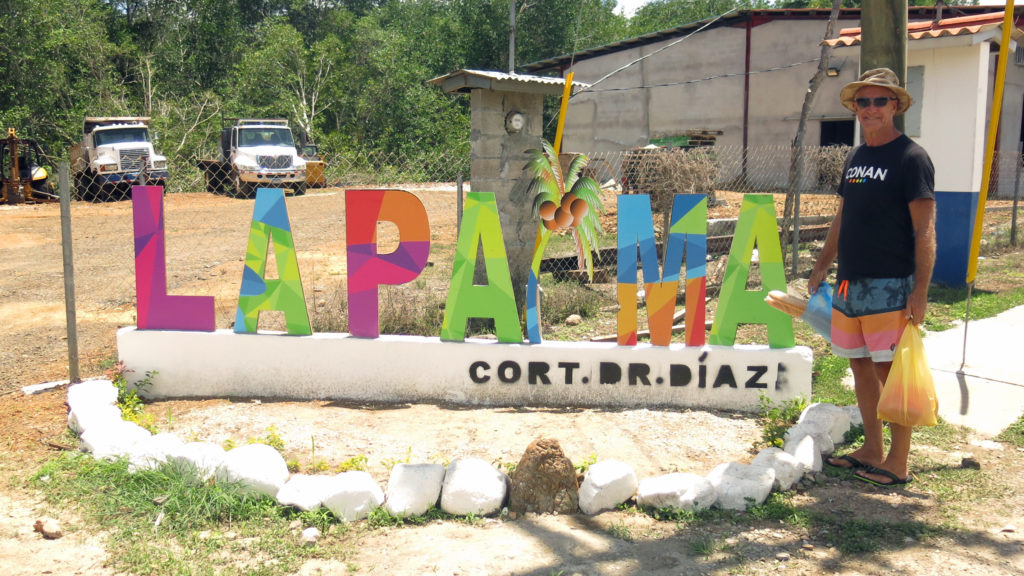
The small town of La Palma lies on a tight bend in the Rio Tuira at the head of the Gulf. Brightly coloured buildings sprawl up the hillside and stilt houses clutter the bank of the river with pangas (fishing canoes) tied up in the water below. La Palma is the adminstrative capital of Darien Province, it has a bakery, a couple of shops and restaurants and a motley collection of very seedy looking bars. We anchored for the night, bought a few veggies and moved on.
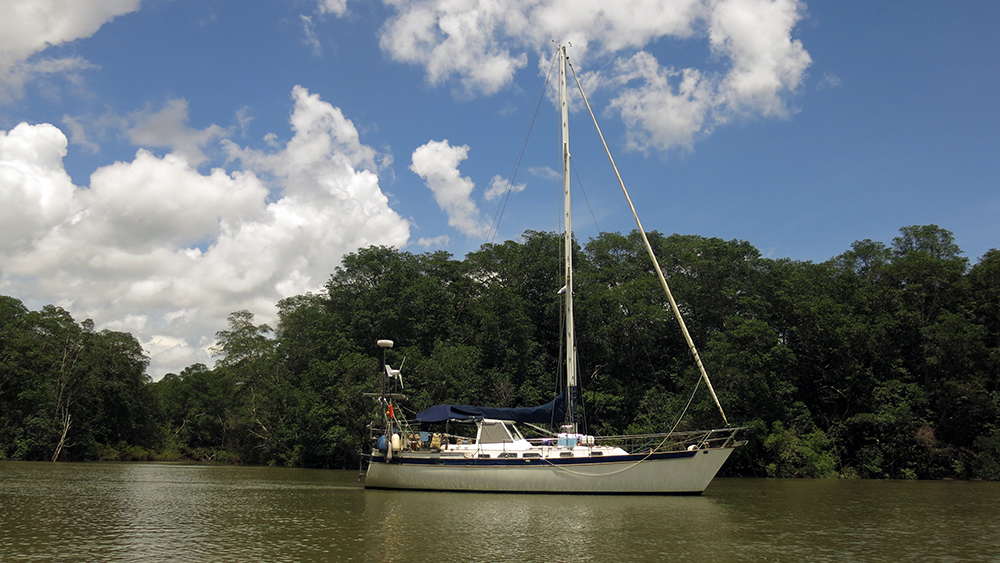
By this time we were in the uncharted waters of the Darien rivers. The only maps we had were in a hard copy of the Panama Cruising Guide, the bible for anyone exploring Panama by boat. We combined these with electronic terrain maps in Navionics, our navigation software, which gave us a rough idea of where we were. Although the Rio Lara is about 500m wide, following the actual navigable channel was tricky especially in the pouring rain when we really needed good visibility. The maps were useful but sometimes intuition and knowing where sand banks build up (on the inside of bends and downstream from headlands and islands) helped with the guess work.
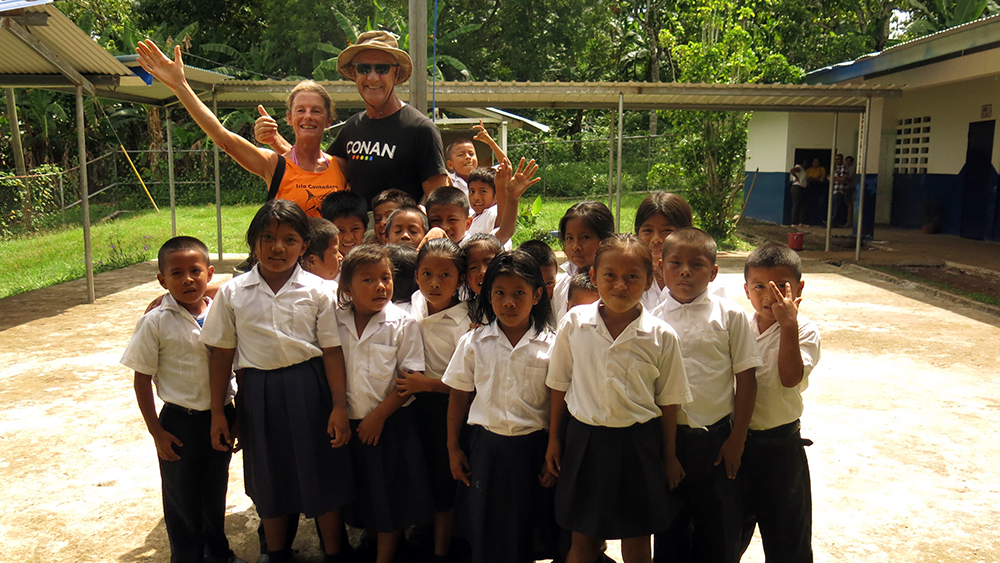
We motored 12 NM up the Rio Lara and anchored behind a cluster of islands then the next day we took the dinghy further upstream to the village of Boco de Lara. The Wounaan people, the local indigenous group in this area, are skilled at carving and famed for their woven baskets but sadly we found none for sale or trade. Their traditional wooden huts on stilts with grass roofs were being replaced by modern concrete houses and an asphalt road into the village was testament to the proximity to the Pan-American highway 8.5km away. We visited the school and gave the students pens and pencils and they gave us smiles.
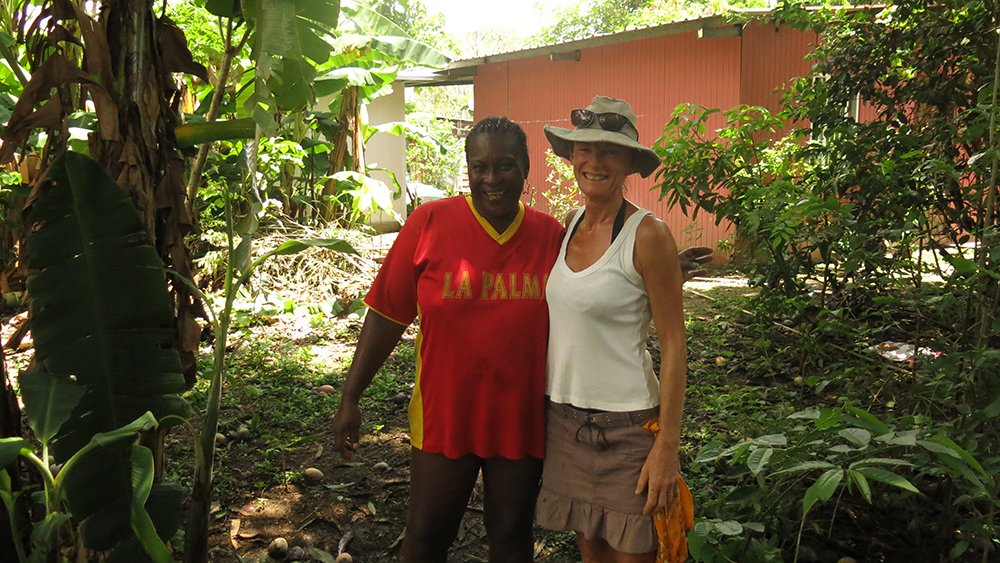
Our dinghy exploration continued the next day to try to reach Arreti, a village that we had spotted on GoogleEarth before we left La Palma. We followed a winding creek through the mangroves trying to remember the different twists and turns, the creek got narrower and shallower and finally we were paddling. We were about to give up when we spotted a couple of dugout canoes tied up to a muddy bank, we’d arrived. The village was slightly more rustic than Boco de Lara; the houses were made of wood instead of concrete, there was a dirt road not asphalt. The people were welcoming and friendly and let us take as many mangoes as we could carry from the huge mango tree in the village square.I made a pot of mango chutney – yum!
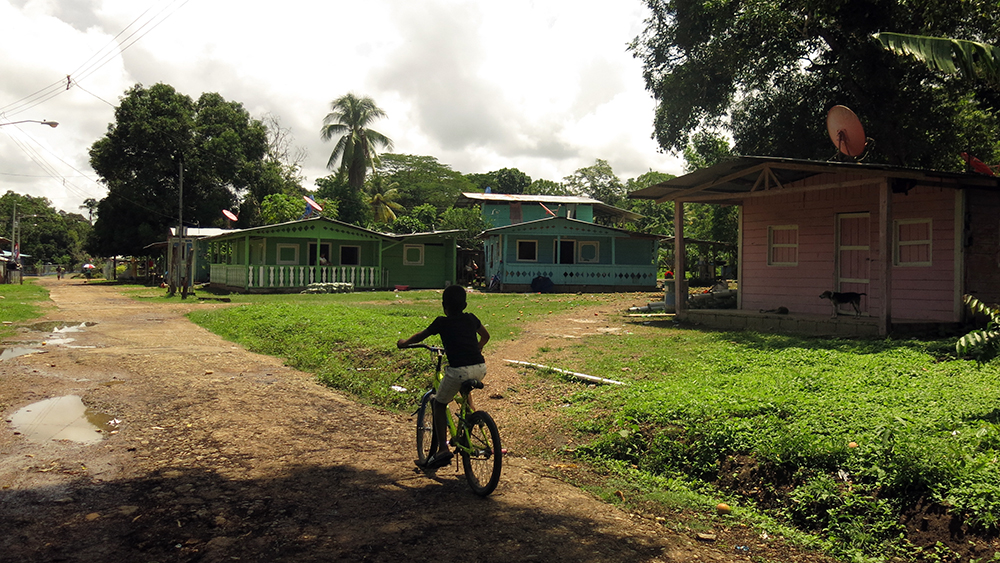
Estero Gregorio Diaz was the narrowest river we went up in Distant Drummer. Finding the channel was no problem as it was so narrow we could barely turn the boat around and we hoped that the high tide would give us enough depth to reach a fork in the river where we could anchor. It was a glorious day and we took the dinghy into the mangroves and saw blue heron and white ibis but no crocs.
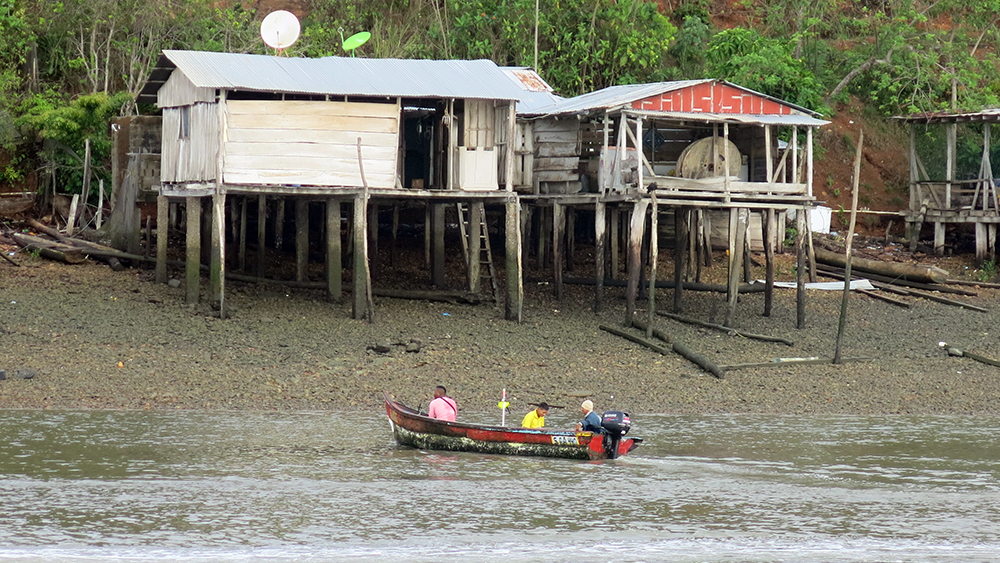
Anchored back in La Palma we had a rude awakening one morning. At about 7:30 we heard the noise of an outboard engine approaching then suddenly a loud crack, a panga had crashed into the side of Distant Drummer. We rushed up on deck to find three bleary-eyed men looking a little startled. They had been out fishing all night and were on their way home, amazingly not one of them had seen a large white yacht in their path. Luckily the prow of the panga had hit our rubbing rail so not much damage but the planking of their boat was coming apart and they had to head to shore quickly to make some repairs.
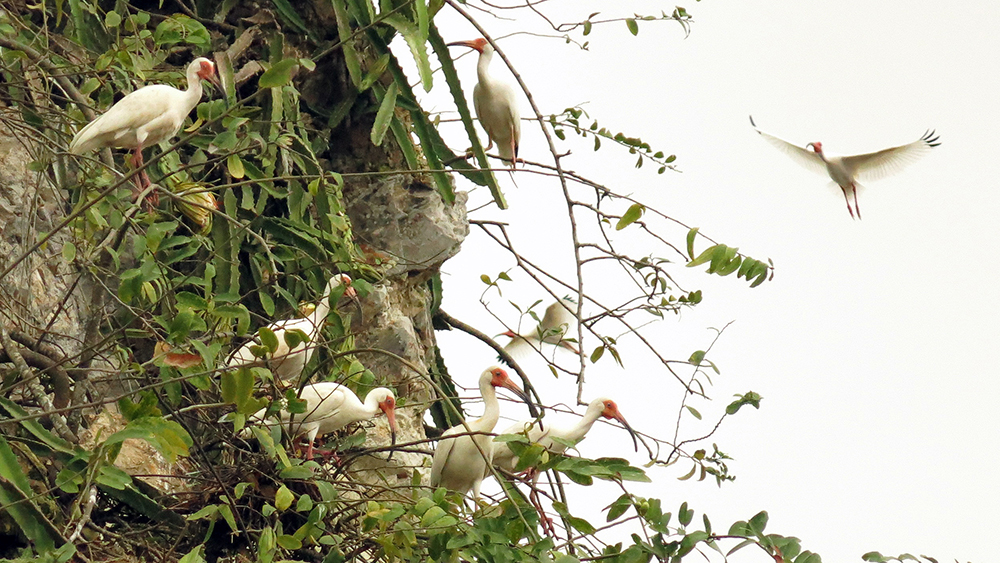
All in all we enjoyed Darien; the rivers and creeks were fun to explore, away from the villages we rarely saw another boat and the peace and tranquility of the uninhabited wilderness was wonderful. We were a bit disappointed with the lack of wildlife which may have been because we were in the mangroves and not in the rainforest. We heard howler monkeys at Isla Iguana and Isla Cedros was the only place we heard bird song. We found a colony of white ibis on the island and enjoyed watching them nesting and fussing around.
More soon
Suzy
